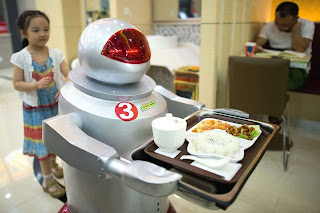Robo News Reporters

I am Not a Robot! Yesterday, I blogged about robot attorneys. It's forecasted that by 2030, robotics and artificial intelligence will dominate the legal profession and totally restructure it. The robotic revolution goes across industries. Oxford University researchers forecast 47% of all US jobs will be held by robots within 20 years. As a journalist, I wondered if similar disruptions could possibly happen in the world of news and sports reporting. Much to my chagrin, the answer is yes. Robo News on a TV and NewsStand Near You Robotics have had a significant photographic role in the news business. Robotic cameras have been in television studios for news and entertainment programs in the US for about 15 years. And drone cameras are used by the print and broadcast press to shoot stills and video particularly in breaking news situations. Drone cameras are common even in small news markets, like Cape Cod, Massachusetts. But traditionally the l...







